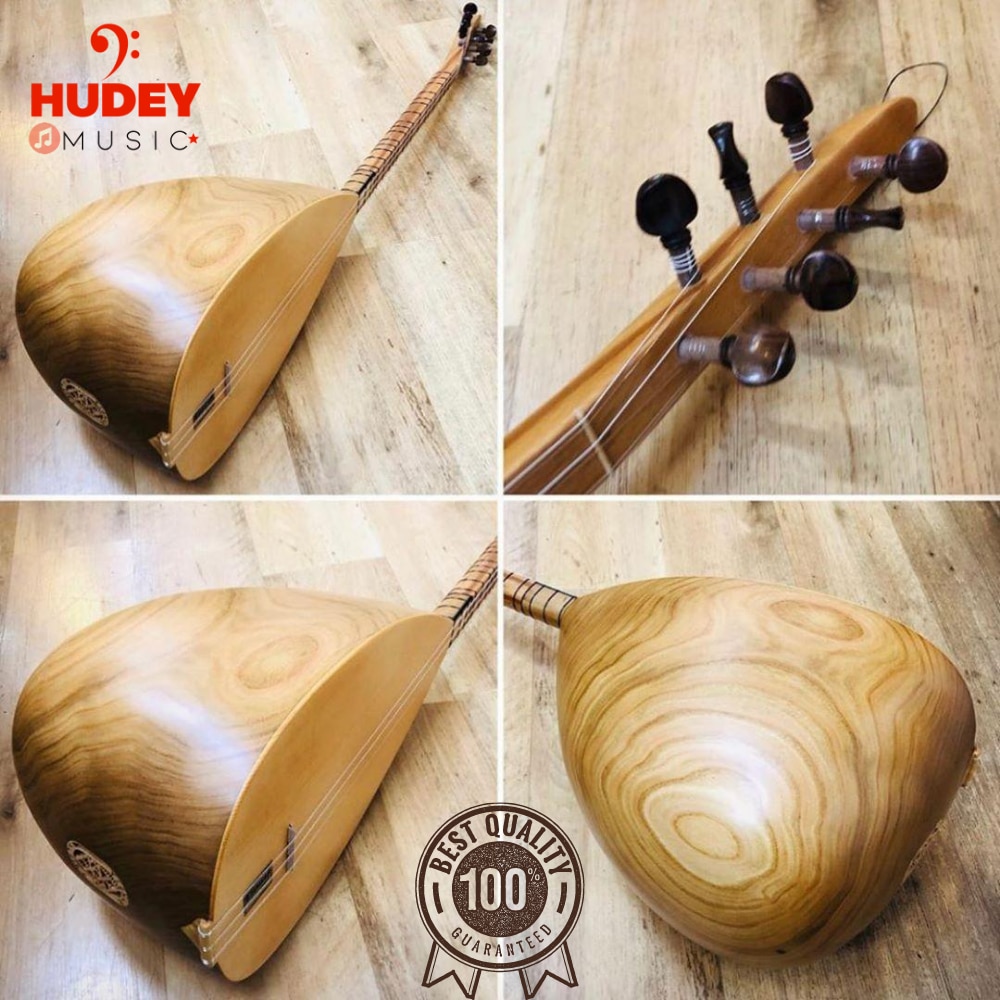
TURKISH BAGLAMA
The most commonly used string folk instrument in Turkey, the bağlama has seven strings divided into courses of two, two and three. It can be tuned in various ways and takes different names according to region and size: Bağlama, Divan Sazı, Bozuk, Çöğür, Kopuz Irızva, Cura, Tambura, etc. The cura is the smallest member of the bağlama family: larger than the cura is the tambura, tuned an octave lower. The Divan sazı, the largest instrument in the family, is tuned one octave lower still.A bağlama has three main parts, the bowl (called tekne), made from mulberry wood or juniper, beech, spruce or walnut, the spruce sound board (göğüs) and a neck of beech or juniper (sap). The tuning pegs are known as burgu (literally screw). Frets are tied to the sap with fishing line, which allows them to be adjusted. The bağlama is usually played with a mızrap or tezene (similar to a guitar pick) made from cherrywood bark or plastic. In some regions, it is played with the fingers in a style known as Şelpe or Şerpe.There are also electric bağlamas, which can be connected to an amplifier. These can have either single or double pickups.

BAGLAMA TUNINGS
There are three string groups, or courses, on the bağlama, with strings double or tripled. These string groups can be tuned in a variety of ways, known as düzen (literally, “order”). For the bağlama düzeni, the most common tuning, the courses are tuned from top downward, A-G-D. Some other düzens are Kara Düzen (C-G-D), Misket Düzeni (A-D-F#), Müstezat (A-D-F), Abdal Düzeni, and Rast Düzeni.Bağlama düzeni (La, Sol, Re) (A, G, D)Bozuk düzen, kara düzen (Sol, Re, La) (G, D, A)Misket düzeni (Fa#, Re, La) (F#, D, A)Fa müstezat düzeni (Fa, Re, La) (F, D, A)Abdal düzeni (La, La, Sol) (A, A, G)Zurna düzeni (Re, Re, La) (D, D, A)Do müstezat düzeni (Sol, Do, La) (G, C, A)Aşık düzeni (La (bottom string set), Re (middle string set), Mi (Top string set) (A, D, E)

